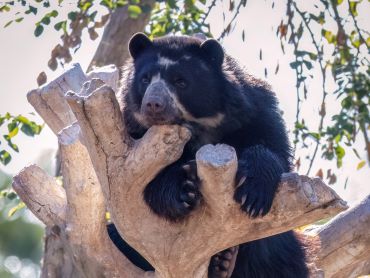Summary of American Zoo Day 2023:
The content discusses American Zoo Day, which is celebrated on July 1. It commemorates the opening of America’s first zoo in Philadelphia in 1874. The Phoenix Zoo, which opened in 1962, is highlighted as a leading zoo in the American zoological community. The post also provides information about different animals, such as the Mexican wolf, cheetah, Andean bear, and sloth, found on different trails at the Phoenix Zoo. It encourages readers to visit the zoo and learn more about these animals.
American Zoo Day is a special holiday celebrated on July 1 to commemorate the opening of America’s first zoo in Philadelphia in 1874. This historical event marked the beginning of a new era in wildlife conservation and the opportunity for people to experience the wonders of the animal kingdom up close. The Philadelphia Zoo started with a collection of nearly 1000 animals and charged a mere quarter for admission, making it accessible to people from all walks of life.
Fast forward to 1962, when the Phoenix Zoo opened its doors, becoming a home to over 3,000 animals representing 400 species worldwide. The zoo has since become a leader in the zoological community and is accredited by the Association of Zoos and Aquariums. On American Zoo Day, we celebrate the rich history of zoos in America and the incredible progress made in animal care and conservation.
To fully appreciate the beauty and diversity of the animal kingdom, let’s take a virtual field trip through the four trails at the Phoenix Zoo and get to know some of the fascinating animals they house.
The Arizona Trail welcomes us with familiar plants and animals native to the Sonoran Desert. One unique mammal we encounter here is the Mexican wolf. This endangered species can be found in southeastern Arizona and southwestern New Mexico, living in packs of 3 to 5 wolves with territories spanning hundreds of square miles. Mexican wolves are carnivores and can be seen hunting for prey such as deer, elk, rodents, and even the local celebrity, the javelina.
Moving on to the Africa Trail, we find ourselves in the presence of the cheetah, the fastest land mammal on the planet. These majestic cats can reach incredible speeds, making them the ultimate sprinters of the animal kingdom. After a high-speed chase, cheetahs need 30 minutes to catch their breath before indulging in a well-deserved meal. They roam vast territories across the grasslands and savannas of Africa, spending much of their lives alone, although males can form small groups.
As we venture into the Tropics Trail, we find ourselves in the enchanting Forest of Uco, home to Auggie, the Andean bear. These bears are arboreal, spending most of their time in the trees. They have a varied diet of roots, shoots, fruits, and insects. Unlike many bear species, Andean bears do not hibernate, as food is available year-round in the forests of the Andes mountains. These bears have a keen sense of smell, compensating for their near-sightedness and helping them navigate their forest habitats.
The Children’s Trail is where we encounter another beloved zoo resident, Linne’s two-toed sloth, Fernando. These adorable animals have become fan favorites for their laid-back lifestyle and sleeping habits. Sloths spend 15 to 18 hours sleeping or sunbathing, essential for their low-calorie, leaf-heavy diet. They are mainly sedentary, living in treetops and only venturing every 4 to 8 days to find food or a new tree to call home. Despite their slow-moving nature, sloths are surprisingly adept swimmers.
Exploring the animals of the world without leaving your hometown is just one of the many reasons why zoos across America are so special. American Zoo Day serves as a reminder of our progress in animal care and conservation. The Phoenix Zoo takes pride in its leadership role in the zoological community and its commitment to providing its animals with a safe and enriching environment.
If you’re interested in learning more about the Mexican wolf, cheetah, Andean bear, sloth, or any of the incredible animals at the Phoenix Zoo, start planning your next visit. There is so much to discover and appreciate about the natural world, and zoos are important in educating and inspiring visitors to protect and conserve wildlife for generations.
So mark your calendars for July 1 – American Zoo Day – and join us in celebrating the beauty and wonder of the animal kingdom.


